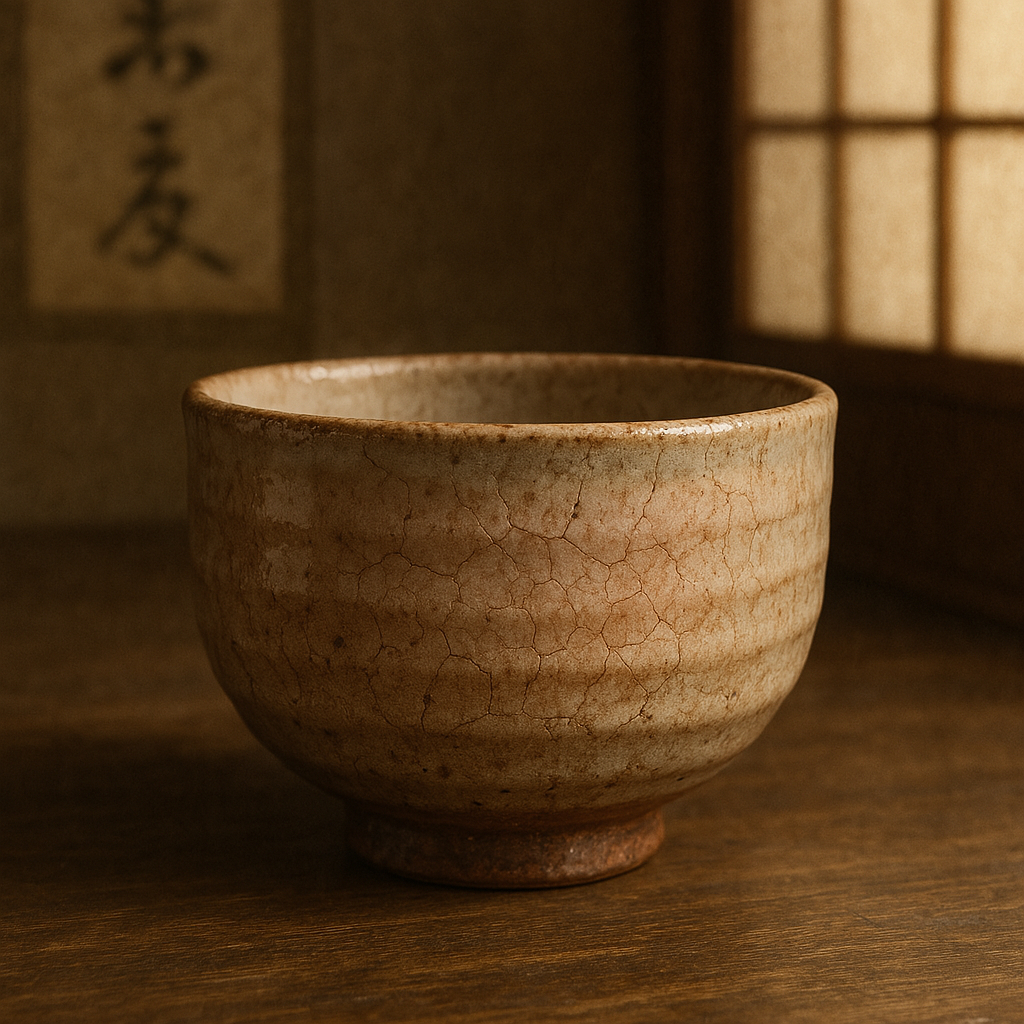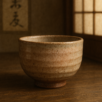
When one holds a piece of Hagi ware in their hands, it feels almost alive. Its soft clay body, warm hues, and subtle surface cracks invite touch, contemplation, and—perhaps most importantly—patience. To appreciate Hagi ware is to enter into a deeper understanding of Japan, where beauty whispers rather than shouts, and perfection lies in imperfection.
What is Hagi Ware?
Hagi ware (萩焼, Hagi-yaki) originates from Hagi City in Yamaguchi Prefecture, western Japan. With a history that spans over 400 years, this style of pottery is rooted in the aesthetics of the Japanese tea ceremony, especially the philosophy of wabi-cha—a rustic, humble, and introspective approach to tea.
Unlike porcelain with its glossy finish and bright colors, Hagi ware is soft and porous. It often comes in earthy tones: pale pinks, creams, greys, and soft browns. One of its most distinctive features is the phenomenon of “kannyu”—the fine cracks in the glaze that develop over time. These cracks allow tea or other liquids to slowly seep in, subtly changing the color of the piece over years of use. In this way, Hagi ware is a living vessel. It “ages” with its user, becoming uniquely personal and irreplaceable.
A Brief History
Hagi ware was introduced by Korean potters who were brought to Japan in the late 16th century, following the Japanese invasions of Korea. Supported by the local feudal lords, these artisans developed a pottery style that was soon adopted by tea masters across Japan. Its unassuming beauty matched the evolving aesthetic of the tea ceremony, especially as it shifted from grandeur to introspection under the influence of tea master Sen no Rikyū.
The Essence of “Wabi-Sabi”
To truly appreciate Hagi ware, one must understand the Japanese aesthetic of wabi-sabi. This concept, often difficult to translate directly into English, can be described as:
- Wabi: a sense of quiet simplicity, solitude, and rustic beauty.
- Sabi: the beauty of aging and impermanence—of things worn, weathered, and used.
Wabi-sabi values the humble over the extravagant, the quiet over the loud, and the incomplete over the perfect. It recognizes beauty in the transient, in the slightly broken, in the gently fading.
For Western sensibilities, trained to appreciate clarity, symmetry, and brilliance, wabi-sabi can feel elusive. But once understood, it opens up a new dimension of experience—not just in art, but in life. It invites a lifestyle of mindfulness, humility, and acceptance. Hagi ware, with its muted colors and evolving surfaces, embodies this principle perfectly.
More Than Just Pottery
Understanding wabi-sabi through Hagi ware can become a gateway to seeing Japanese culture in a new light. From Zen gardens to traditional architecture, from seasonal cuisine to poetry, Japan’s beauty often lies beneath the surface—quietly waiting to be noticed.
Hagi ware doesn’t demand attention. It invites presence. And in doing so, it speaks to a deeper truth: that beauty is not something to be possessed, but something to be experienced—slowly, quietly, over time.
萩焼と「侘び寂び」の精神──土を通して日本を理解する
一つの萩焼の器を手に取ると、それはまるで生きているかのように感じられます。柔らかな土の質感、温かみのある色合い、そして控えめな表面のひび模様。それらは触れること、思索すること、そして──何よりも──時間をかけて向き合うことを私たちに誘います。
萩焼を味わうということは、日本という国をより深く理解する入口に立つことでもあります。そこでは美は声高に叫ぶのではなく、静かにささやかれ、そして完璧とは不完全の中に宿るのです。
萩焼とは?
萩焼(はぎやき)は、日本の西部・山口県萩市に由来する陶器です。その歴史は400年以上にわたり、日本の茶道、特に“わび茶”──素朴で控えめで内省的な茶の湯の思想──に根ざしています。
艶やかで鮮やかな色彩を持つ磁器とは異なり、萩焼は柔らかく、多孔質です。色味は、淡いピンク、クリーム、灰色、そして柔らかな茶色など、土の色そのものに近いものが多く見られます。最も特徴的なのは**「貫入(かんにゅう)」**と呼ばれる現象です。これは釉薬に入る細かなひびのことで、使い続けることで茶や液体がそのひびに少しずつ染み込み、器の色合いが年月と共に変化していきます。
このように、萩焼は「生きた器」です。使う人とともに「歳を重ね」、唯一無二の存在へと育っていきます。
簡単な歴史
萩焼は16世紀後半、朝鮮出兵の後に日本に連れてこられた朝鮮人陶工によって始まりました。地元の大名たちの支援を受け、彼らの技術は独自の焼き物文化を築き、やがて日本中の茶人たちに受け入れられていきます。特に千利休の影響を受けて、茶の湯が豪華さから内面性へと変化する中で、萩焼の素朴な美しさは理想とされました。
「侘び寂び」の本質
萩焼を本当に味わうには、日本独自の美意識である**「侘び寂び」**を理解することが不可欠です。この概念は英語に直接訳すのが難しいですが、以下のように説明されます:
- 侘び(Wabi):静けさ、孤独、素朴さの中にある美。
- 寂び(Sabi):古びたもの、時間が経ったものの中にある美。
侘び寂びは、派手さよりも控えめさを、声高な主張よりも静けさを、完璧さよりも未完成を好みます。それは、壊れかけたもの、色あせたもの、そして変化し続けるものの中に美を見出します。
西洋の感性──明快さ、対称性、輝きといった価値観に慣れた目には、この侘び寂びの美は一見つかみにくいかもしれません。しかし一度理解できれば、それは芸術だけでなく人生そのものにおける新たな視点を与えてくれます。侘び寂びは、心を込めて、謙虚に、そして変化を受け入れながら生きることを促してくれる哲学でもあるのです。
そして萩焼は、その静かな色合いと、日々変わりゆく姿を通じて、この哲学を見事に体現しています。
単なる器ではない
萩焼を通して侘び寂びを理解することは、日本文化を見る新たな視点を得ることでもあります。禅庭園や伝統建築、季節を尊ぶ料理や詩歌に至るまで、日本の美はしばしば表面ではなく、静かに潜むものとして存在しています。
萩焼は注目を集めようとはしません。私たちの意識を「今、ここ」に引き寄せるのです。そして、こう語りかけてくれます──美しさとは、所有するものではなく、時間をかけて、静かに、深く味わうものなのだと。
